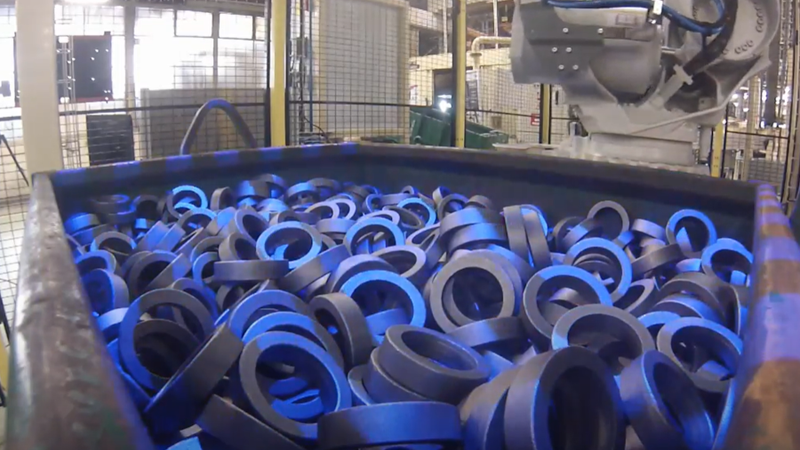The Bin-Picking Handbook For Engineers
This handbook introduces the concept of bin-picking, and explores its complexity through real-case studies.
The automation of a production line has become a major issue for many industries, and the need to increase productivity while having a good return on investment has caused many concerns. The main area in which these challenges are tackled is bin-picking.
Moving a part from a container to place it to a specific position, ready for the next step, sounds very simple, but it becomes complex when you need to abide to cycle-time requirements.
As demand for accurate, autonomous and flexible bin-picking systems increase, Visio Nerf has produced a handbook to the technology designed introduce key concepts and offer concrete examples of cutting-edge technology. Below are some of thehighlights from the handbook. The book guide can be downloaded here.
Introduction to Bin-Picking
The automation of production cells is at the heart of current concerns for many industries, the main objective being to find the right balance between investment and improved productivity. One of the operations for which the evolution towards a high-performance automated production tool has become necessary is Bin-Picking.
Bin-picking involves moving a part from its original position to a specific delivery zone to make it available for the next production step. The workpiece is initially placed in a container or on a conveyor in a random, semi or fully-ordered manner depending on the application. The main challenge of Bin-Picking is to offer an efficient automated solution to meet cycle time optimization requirements, to protect operators from difficult and repetitive tasks particularly in harsh environments while increasing the flexibility and productivity of the work cell. Technological advances in the field of machine vision and calculation software can now provide solutions adapted to most industrial applications.
Essential criteria for assessing bin-picking
In order to assess the efficiency of a Bin-Picking cell and determine its dimensioning, several criteria must be taken into account:
- Cell cycle time
- Bin emptying rate
- Part pick and place accuracy
These elements aim to measure and improve, more or less directly, the profitability of the cell at different times of its cycle life. A fourth factor to consider, that is too often overlooked, is the flexibility of the cell or its ability to be reused in several applications.
With Industry 4.0, companies are looking for agile cells that can be reused without too many modifications when the type of the parts to be picked changes. These four criteria are intrinsically linked. For example, a suboptimal emptying rate may require the addition of mechanical systems to shake the bin or a change to more appropriate tools to complete the task. Integration of such elements extends the cycle time and penalizes the flexibility of the cell. Appropriate bin-picking cell sizing is essential and involves finding the right balance between these criteria.
To read more about the technology behind bin-picking, download the full guide, written by Adib Rebbouh with Visio-Nerf here.
